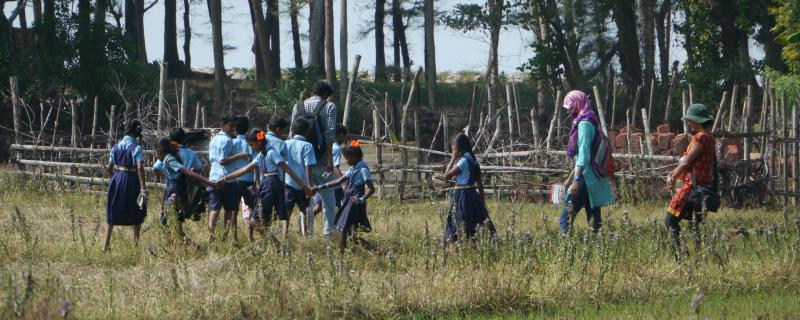
Archives
Scientists from the Indian Institute of Science, Bangalore have described a new species of plant in Coastal Karnataka. Here the team describes the morphological features that helped them identify the plants as a separate species. They find that Reissantia sessiliflora is endemic to the region and highlight the threats faced by the plant along with the actions the public can take for its conservation.
The rhythmic contraction and relaxation of muscles of the food-pipe or the oesophagus, called peristalsis, pushes the food to the stomach. Researchers from Indian Institute of Technology, Varanasi have developed a mathematical model of the human oesophagus that could explain the pressure variation in the oesophagus.
Cancer is a difficult disease, both for patients and doctors. One of the many side effects of cancer therapies is secondary infections that are caused by a weakened immune system. Current strategies for treating bacterial infections in cancer patients have many drawbacks. Addressing these issues scientists from the Indian Institute of Technology, Delhi show that administering antimicrobial medicines with gold nanoparticles increases their efficacy by upto 40%.
The Indian National Academy of Engineering, a consortium of distinguished engineers in the country, has announced the winners of the annual Young Engineer Award 2017. With 3 awards, IISc grabbed the highest number of awards this year followed by ISRO and six IITs winning one each. The award is given as a recognition to engineering and scientific contributions in the country, with individuals selected from government, academia and industry.
Transistors are the backbone of the zillion electronic devices that we use today. While development of these semiconductor devices dates back to four decades, it's applications are ever increasing. Internet of Things is the new application that is transforming the development of transistors. In view of this, scientists at IIT Bombay and SCL ISRO have developed a new kind of Bipolar Junction Transistor that is completely indigenous. The researchers believe a home made technology can see its application in strategic sectors like space and defence.
We live in an era of medical advancements where sequencing of the human genome and its subsequent applications in personalised medicine, offer to completely revolutionise the diagnosis, treatment and even prevention of various diseases.
Chillies are an indispensable part of the Indian platter and contribute heavily to our economy since India is a leading producer of chillies. A threat facing the chilli farmers is the fungal disease caused by Colletotrichum truncatum that affects the yield of the crop. In a new study, scientists have explored the mechanism behind the fungal disease, how the fungus actually attacks the plant and fruits and have also studied the genotype of the causative agents. This study, the researchers believe, can help develop mitigation plans and save farmers from an impending crop loss.
Snakehead fishes are predatory ray-finned fishes belonging to the family Channidae. Found across Asia and Africa, snakehead fishes are important sources of food, and are widely cultivated by humans.
India is gifted with lush green tropical forests and an annual monsoon that revives life in most parts of the country. Yet, the country is reeling from a persistent drought, while many of our forests are losing ground to rapid development. In the midst of this change, let us look at the state of environmental education in the country. In this story, Shaurya Rahul Naralanka, a lecturer of environmental science at Manipal University reminds us of the challenges and opportunities in teaching about nature.







